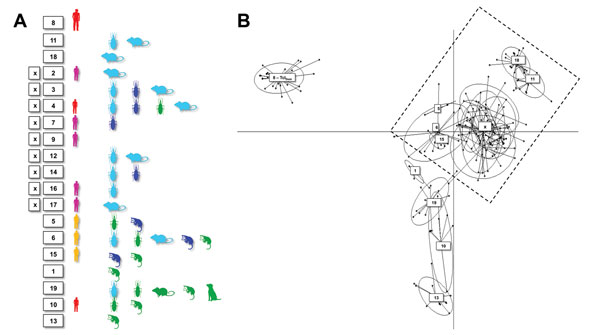Volume 19, Number 7—July 2013
Dispatch
Molecular Epidemiologic Source Tracking of Orally Transmitted Chagas Disease, Venezuela
Figure 2

Figure 2. . Discriminant analysis of principal components showing genetic clustering among Trypanosoma cruzi isolates from 2 outbreaks of oral disease in northern Venezuela. Six principal components were retained, explaining 80% of the diversity. Ellipses correspond to the optimal (as defined by the Bayesian information criterion minimum) number of population clusters among the genotypes analyzed. Images indicate sample host origin (human, rodent, marsupial, or triatomine), while colors correspond to the key in Figure 1. A full list of samples and population assignments (numbered boxes) is included in Technical Appendix 2. Dashed box indicates the isolates associated with the outbreaks.
Page created: June 17, 2013
Page updated: June 17, 2013
Page reviewed: June 17, 2013
The conclusions, findings, and opinions expressed by authors contributing to this journal do not necessarily reflect the official position of the U.S. Department of Health and Human Services, the Public Health Service, the Centers for Disease Control and Prevention, or the authors' affiliated institutions. Use of trade names is for identification only and does not imply endorsement by any of the groups named above.